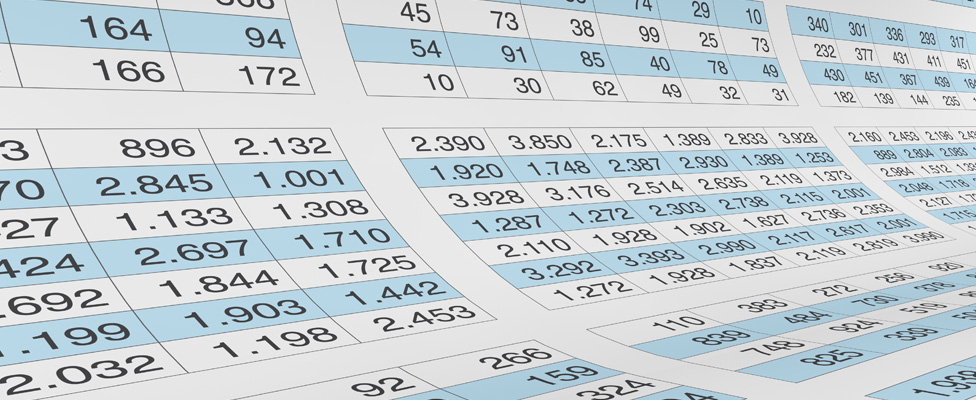
FreeSight: The Spreadsheet Reimagined
FreeSight isn't like other spreadsheet-esque offerings. A so-called "governance spreadsheet," it supports repeatability and reuse in a class unto itself.
A decade ago, FreeSight might've been marketed as a better-than-spreadsheet spreadsheet tool. Scratch that: a decade ago nothing quite like FreeSight even existed.
Spreadsheet Governance
FreeSight is an exemplar of what its founders call "spreadsheet governance" -- and it also addresses self-service data prep and analysis. Analysts can use FreeSight much like they'd use Excel, and FreeSight keeps close track of everything they do.
"For spreadsheet lovers, we do almost everything a spreadsheet can do -- and more. You can delete rows and columns and come back a month later and bring it all back; you can easily revert to previous versions of the data," says Norm Rosner, president and CEO of FreeSight Software.
"We're actually part of this new spreadsheet governance movement. Everything you do in FreeSight is transparent. You can always answer the question 'Where did this number come from?' Not only can you see the workflow of what's been done to the data, you can see the exact changes that have been made, too," says David Lefkowich, business development officer with FreeSight.
Spreadsheets for Data Management and Data Prep
Rosner notes that FreeSight is designed to support repeatability and reuse: you can use FreeSight's GUI data prep tool to design and automate data flows. You can build a FreeSight data flow like you'd build a data flow in other, similar GUI tools, such as Microsoft's SQL Server Integration Services (SSIS).
Even though data management practitioners might wish otherwise, the spreadsheet -- along with its related phenomenon, the spreadmart -- refuses to go away. Quite the reverse, actually. If anything, it's data management practitioners who are endangered -- if they don't get with the program, that is.
"The reality is that many people use spreadsheets to do [data] manipulation at the desktop despite having a corporate system [such as the data warehouse]," Lefkowich says. "They don't have easy access to the corporate BI tool that's supposed to simplify their life. Even if they do, getting the report exactly they want it from IT takes a minimum of three weeks -- if they're lucky."
Spreadsheet-like Self-Service for a Post-DW Age
In some ways, we're already living and working in a post-data warehouse age. The success of self-service data discovery and data prep tools is one proof point; the emergence of tools such as FreeSight is another.
This doesn't mean the data warehouse is unnecessary or obsolete. It does mean the warehouse has been bypassed -- even abandoned -- in critical ways by some of its traditional constituencies, however. In the past, warehouse-bypass was an informal, unsanctioned phenomenon. IT and data management used to turn a blind eye to it because they couldn't stop it.
Now they're being required to support self-serving users, Lefkowich says.
This is true even in highly regulated industries. For example, three of Canada's five biggest banks are FreeSight customers. Rosner demoed a production example from one such bank -- a data flow that cleanses and joins data from more than 200 different Excel spreadsheets, text files, and other artifacts.
A single analyst used FreeSight to design and automate this data flow, he says. "This process use to take ... about one month of person-time to accomplish [prior to FreeSight]. It now takes five hours, start to finish, of which four and a half hours are processing time."
FreeSight's Data Prep and Cleansing Tools
In some customer accounts, Rosner says, the warehouse serves as a source for FreeSight data; in others, it doesn't. An analyst can use FreeSight's data prep facility to import data from XLS spreadsheet files, along with CSV, TXT, HTML, XML, and other file types. FreeSight makes guesses about the relationships embedded in the data.
The analyst can then use FreeSight's data prep GUI to modify or customize these relationships as well as to configure cleansing routines or define data transformations. FreeSight parses text to automate certain kinds of cleansing tasks -- e.g., inconsistently named or misspelled keys.
"It studies the data to identify pairs of keys and data that roughly correlate well enough that they may be intended to go together," Lefkowich says. "Sometimes there are different names, so it will show me different spellings. I can pick one [of the existing spellings] or pick a different one if I want."
Drawbacks and Caveats
FreeSight isn't perfect. Architecturally, it's based on what is essentially a spreadmart model, with virtually no provision for central oversight. (From the perspective of many in business, this is a feature, not a shortcoming.) It doesn't expose any built-in collaborative features, either. If you want to share data or the results of an analysis in FreeSight, you have to expose it via network storage, attach it to an email, upload it to DropBox, etc.
Finally, there's its security model: FreeSight doesn't natively encrypt the contents of a data set; it doesn't enforce user- or role-specific access control restrictions; and it doesn't enforce row- or column-based access. This is an issue FreeSight plans to focus on in future product development, Lefkowich says.
"Our security [model] is basically the same as [the] Excel [security model]. We don't do anything you can't do in other ways -- maybe even in Excel. We just do it a whole lot faster, more easily, with much higher levels of quality assurance," he concludes. "Once you master FreeSight, it opens the door to extremely powerful automated recurring reporting and analysis projects."